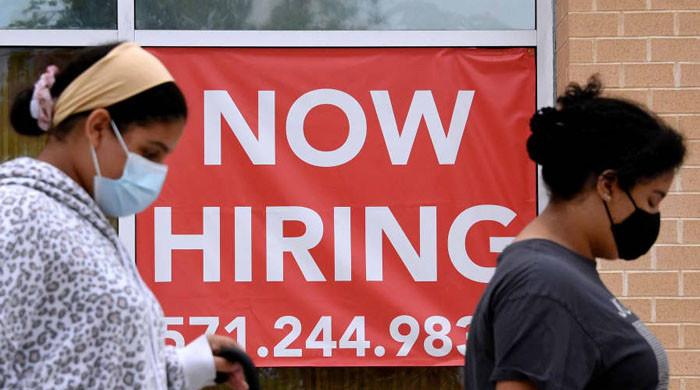 The world's biggest economy added 150,000 jobs last month, less than analysts expected and down from a revised 297,000 figure in September
The world's biggest economy added 150,000 jobs last month, less than analysts expected and down from a revised 297,000 figure in SeptemberBased on government data released on Friday, job growth in the United States slowed down in October, partly due to a strike by autoworkers as the unemployment rate edged up to 3.9%.
The world's biggest economy added 150,000 jobs last month, less than analysts expected and down from a revised 297,000 figure in September, the Labor Department said.
The unemployment rate edged up to 3.9%, the report added.
President Joe Biden lauded the job creation numbers in a statement, adding that the share of working-age Americans with jobs is higher than pre-pandemic levels.
"The unemployment rate has been below four percent for 21 months in a row, the longest stretch in more than 50 years," he said.
Overall the latest figures reflect a downward trend in job growth, even if amplified by the impact of striking workers.
This is likely seen as good news for policymakers, given concerns that a too-hot labor market could contribute to elevated inflation.
The job market has been unexpectedly resilient over the past year, even as the central bank lifted interest rates rapidly to combat inflation — a move that typically sees hiring cool and unemployment edge up.
But robust job and wage growth has allowed consumers to continue spending even as inflation came down, buoying economic growth.
This has lifted hopes that the United States can avoid a recession despite higher interest rates.
Average hourly earnings in October rose 0.2%, inching down from the month before, Labor Department data showed.
Wages were up 4.1% from a year ago, the lowest annual rise since June 2021.
Strike impact
"The hiring slowdown was broad-based," said EY senior economist Lydia Boussour in a note, adding that services employment grew at a much slower pace.
"Employment in manufacturing decreased by 35,000 in October, reflecting a decline of 33,000 in motor vehicles and parts that was largely due to strike activity," the Labor Department said.
Last month, auto workers expanded a strike launched in mid-September.
The United Auto Workers union had launched the first simultaneous work stoppage at the "Big Three" automakers — General Motors, Stellantis, and Ford — pushing for higher wages and other improvements.
At its height, the strike mobilized more than 45,000 workers.
The impact of the movement reflects both striking workers and related layoffs at other firms in the supply chain, said economist Nancy Vanden Houten of Oxford Economics.
"The UAW has reached tentative contracts with all three car companies, but the agreements came too late in the month to be reflected in the October jobs report," she added in a recent note.
Analysts say the hit from the strike is temporary.
Outside of that, "we look for a resumed, broad-based slowing in job creation" led by the services sector, Nationwide chief economist Kathy Bostjancic told AFP.
Further disinflation
"Moderating wage growth, along with slower demand for goods and services, easing rent inflation and reduced pricing power should lead to further disinflation," said EY economists.
This argues in favor of the Federal Reserve holding the benchmark lending rate steady in the coming months.
Fed policymakers will likely leave the door open to further tightening, but several economists expect they are done raising rates for now.
Boussour anticipates "softer labour market conditions" ahead, with more hiring freezes and efforts to resize workforces, while wage growth continues to cool.
The jobless rate is also expected to tick up, she said





No comments:
Post a Comment
My name is Adnan Shahzad I am a Graphic Designer. and Virtual Assistant.Writer.Freelancers.Photographer.YouTuber Servicess.Provider.